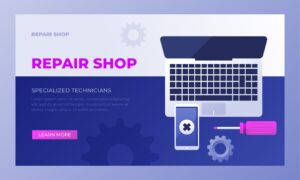
cucumber framework
Unveiling the Power of Reporting and Analytics in Cucumber-Selenium Projects
In the dynamic realm of software testing , the quest for seamless automation and efficient reporting is perpetual. Among the array of tools and frameworks available, Cucumber-Selenium shines brightly as a beacon of reliability and efficacy. Let’s embark on a journey to unravel the significance of reporting and analytics in cucumber framework projects, exploring how this dynamic duo elevates the landscape of software testing.
Table of Contents
| Sr# | Headings |
| 1 | Understanding Cucumber Framework and Its Role |
| 2 | Leveraging Analytics for Informed Decision-Making |
| 3 | The Power of Data-driven Insights |
| 4 | Real-time Reporting: Empowering Actionable Insights |
| 5 | The Evolution of Testing Practices with Cucumber-Selenium |
| 6 | From Manual to Automated: A Paradigm Shift |
| 7 | Continuous Integration and Continuous Testing |
| 8 | Conclusion: Navigating the Future of Software Testing |
| 9 | FAQs |
Understanding Cucumber Framework and Its Role in Automation Testing
Cucumber: A Catalyst for Collaboration
Cucumber isn’t just another testing framework; it’s a language that fosters collaboration between technical and non-technical stakeholders. By employing Gherkin syntax, Cucumber bridges the communication gap, enabling stakeholders to express requirements in a structured, human-readable format. This unique feature empowers teams to align their efforts seamlessly, translating business requirements into executable tests with unparalleled clarity.
Automation Testing: Driving Efficiency and Reliability
In the realm of automation testing in software testing , automation is synonymous with efficiency and reliability. By automating repetitive and time-consuming test scenarios, teams can streamline their testing efforts, allowing for faster feedback loops and accelerated release cycles. cucumber software integration with Selenium, a powerful web automation tool, amplifies these benefits, empowering testers to execute automated tests across various web applications with precision and speed.
Leveraging Analytics for Informed Decision-Making
The Power of Data-driven Insights
Analytics serve as the compass guiding the course of software testing endeavors. By harnessing the wealth of data generated during test executions, teams can glean invaluable insights into the quality and performance of their applications. From identifying trends and patterns to pinpointing areas of improvement, analytics equip teams with the knowledge needed to make informed decisions, ultimately enhancing the overall quality of their software products.
Real-time Reporting: Empowering Actionable Insights
In today’s fast-paced development landscape, real-time reporting is non-negotiable. bdd cucumber framework robust reporting capabilities, coupled with Selenium’s seamless integration, enable teams to generate comprehensive test reports instantaneously. These reports not only provide a bird’s eye view of test execution results but also furnish detailed insights into failed scenarios, enabling swift remediation actions and fostering continuous improvement.
The Evolution of Testing Practices with Cucumber-Selenium
From Manual to Automated: A Paradigm Shift
The advent of cucumber software testing marks a paradigm shift in testing practices, propelling organizations from manual, labor-intensive testing to automated, streamlined workflows. By harnessing the combined power of Cucumber’s expressive syntax and Selenium’s robust automation capabilities, teams can transcend the limitations of traditional testing approaches, unlocking new levels of efficiency, accuracy, and scalability.
Continuous Integration and Continuous Testing: The Cornerstones of Agile Testing
In the agile era, speed and agility reign supreme. Cucumber-Selenium facilitates seamless integration with popular CI/CD pipelines, enabling teams to embrace the principles of continuous integration and continuous testing. This integration ensures that every code change undergoes rigorous automated testing, empowering teams to detect and address issues early in the development cycle, thereby minimizing risk and accelerating time-to-market.
Conclusion: Navigating the Future of Software Testing with Confidence
As we navigate the ever-evolving landscape of software testing, the role of reporting and analytics in Cucumber-Selenium projects becomes increasingly paramount. By leveraging the power of Cucumber’s expressive syntax, Selenium’s robust automation capabilities, and advanced analytics tools, teams can embark on a journey of continuous improvement, driving efficiency, reliability, and innovation. Embrace the future of testing with confidence, armed with the tools and insights needed to conquer any challenge that comes your way.
FAQs (Frequently Asked Questions)
1. How does Cucumber facilitate collaboration between technical and non-technical stakeholders?
Cucumber facilitates collaboration through its Gherkin syntax, allowing stakeholders to express requirements in a structured, human-readable format.
2. What are the benefits of leveraging analytics in software testing?
Analytics provide valuable insights into the quality and performance of applications, enabling informed decision-making and continuous improvement.
3. How does real-time reporting empower actionable insights?
Real-time reporting in Cucumber-Selenium projects provides instant visibility into test execution results, enabling teams to take swift remediation actions and drive continuous improvement.
4. What advantages do Continuous Integration and Continuous Testing offer in Agile development?
Continuous Integration and Continuous Testing ensure that every code change undergoes rigorous automated testing, minimizing risk and accelerating time-to-market in Agile development.
5. How does Cucumber-Selenium contribute to the evolution of testing practices?
Cucumber-Selenium marks a paradigm shift from manual to automated testing, driving efficiency, accuracy, and scalability in software testing workflows.







